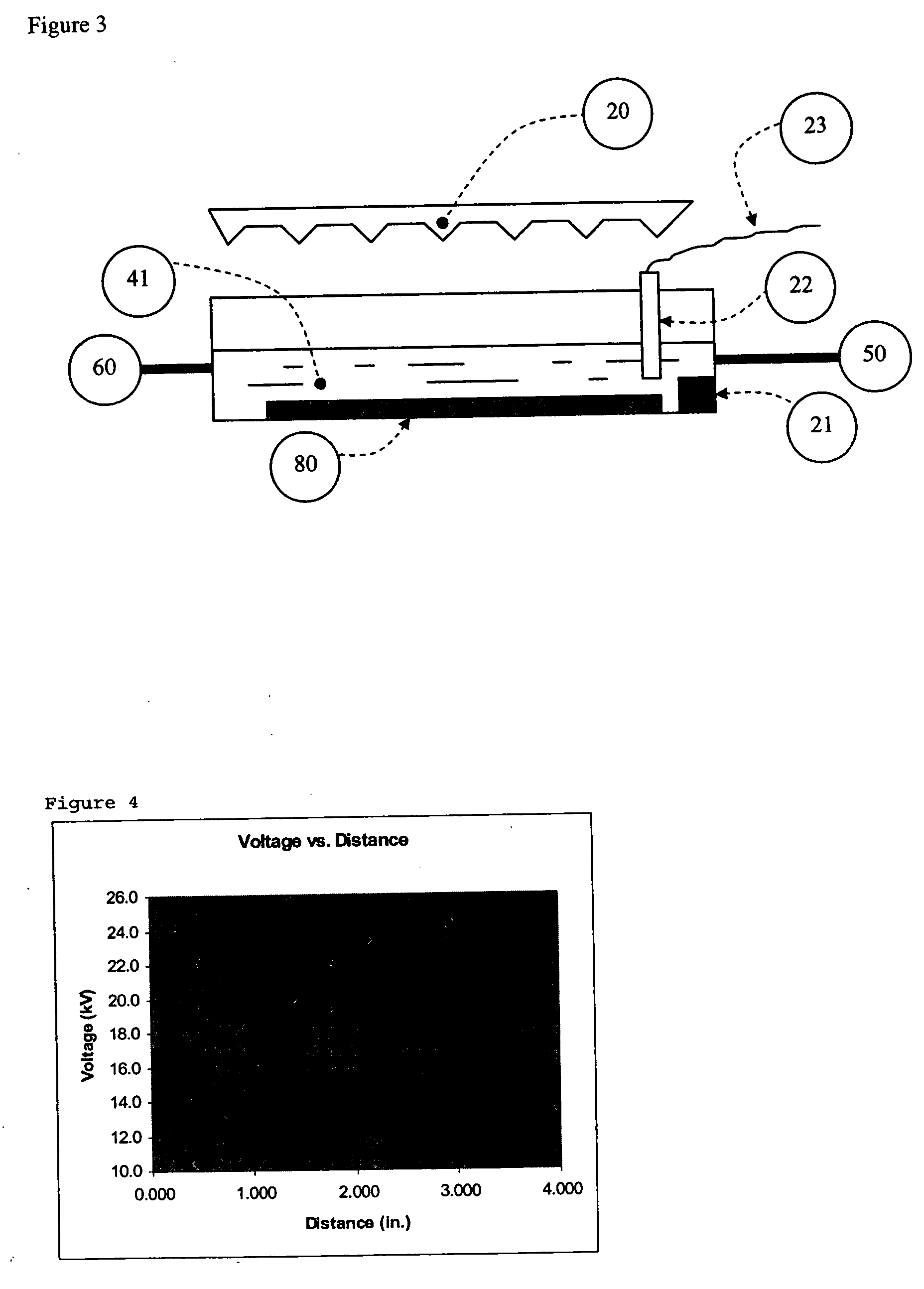Self cleaning electrostatic air cleaning system
an electrostatic air cleaning and self-cleaning technology, applied in electrostatic separation, electrostatic cleaning, chemistry apparatus and processes, etc., can solve the problems of burdened systems, etc., and achieve the effect of reducing or eliminating airborne microbes
- Summary
- Abstract
- Description
- Claims
- Application Information
AI Technical Summary
Benefits of technology
Problems solved by technology
Method used
Image
Examples
example 1
[0049] We tested one embodiment of the above-described self cleaning air cleaner 1 using a power supply which supplied −22.1 kV to six negative air ion generator bars 20. Each bar was approximately 10 inches long, with 19 punched sheet metal ionization tips 30 each having a length of 5 / 16″, spaced approximately 0.5 inches apart, for a total of 114 ionization tips for the entire assembly. A non-conducting water collection volume 70 was used with a ground electrode 80 located under the surface 40 of the water body 41. The volume of water was 2.5 liters. The ionization tips were located 1.75 inches from the water surface 40. This device was installed in the return air duct of a 3-ton air handler, below the condensate pan. This 3-ton air handler had an air flow rate of approximately 975 CFM. This device was shown to remove between about 0.33 and 0.83 mg / hr of contaminants for 6 hours from air at different times of day, and the power consumed by this self-cleaning air filter, for this co...
example 2
[0050] The system of Example 1 was tested with the ionization tips located 2.25 inches from the water surface 40. The volume of water body 41 was 1.8 liters. The voltage on the six negative air ion generator bars 20 was −23.7 kV. This device was shown to remove 0.17 mg / hr of contaminants for 6 hours of air conditioner operation, and the power consumed by this self-cleaning air filter, for this configuration, was 1.9 Watts. A test at a different location with 1491 CFM of air flow removed dust / particulates at about 0.28 mg / hr.
example 3
[0051] The system of Example 1 was tested with the ionization tips located at 1.25 inches from the water surface 40. The voltage on the six negative air ion generator bars 20 was −17.8 kV and an air flow of 975 CFM. This device was shown to remove between about 0.67 and 1.17 mg / hr of contaminants for 6 hours of operation at different times of day. The power consumed was 6.1 Watts. In a separate 24-hour test at a different location with 1491 CFM of air flow, the solids were removed at an equivalent rate of 0.50 mg / hr.
PUM
 Login to View More
Login to View More Abstract
Description
Claims
Application Information
 Login to View More
Login to View More - R&D
- Intellectual Property
- Life Sciences
- Materials
- Tech Scout
- Unparalleled Data Quality
- Higher Quality Content
- 60% Fewer Hallucinations
Browse by: Latest US Patents, China's latest patents, Technical Efficacy Thesaurus, Application Domain, Technology Topic, Popular Technical Reports.
© 2025 PatSnap. All rights reserved.Legal|Privacy policy|Modern Slavery Act Transparency Statement|Sitemap|About US| Contact US: help@patsnap.com



